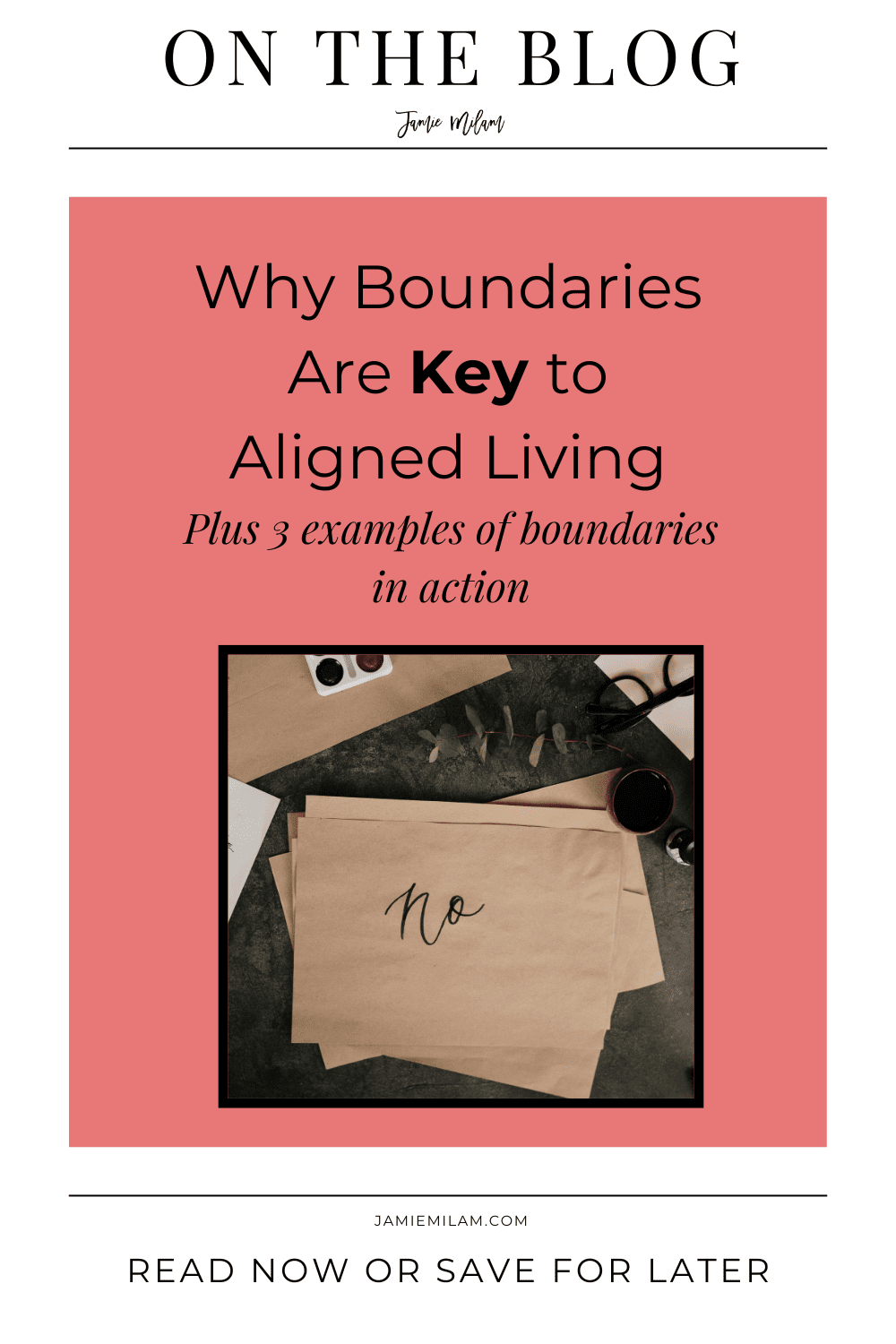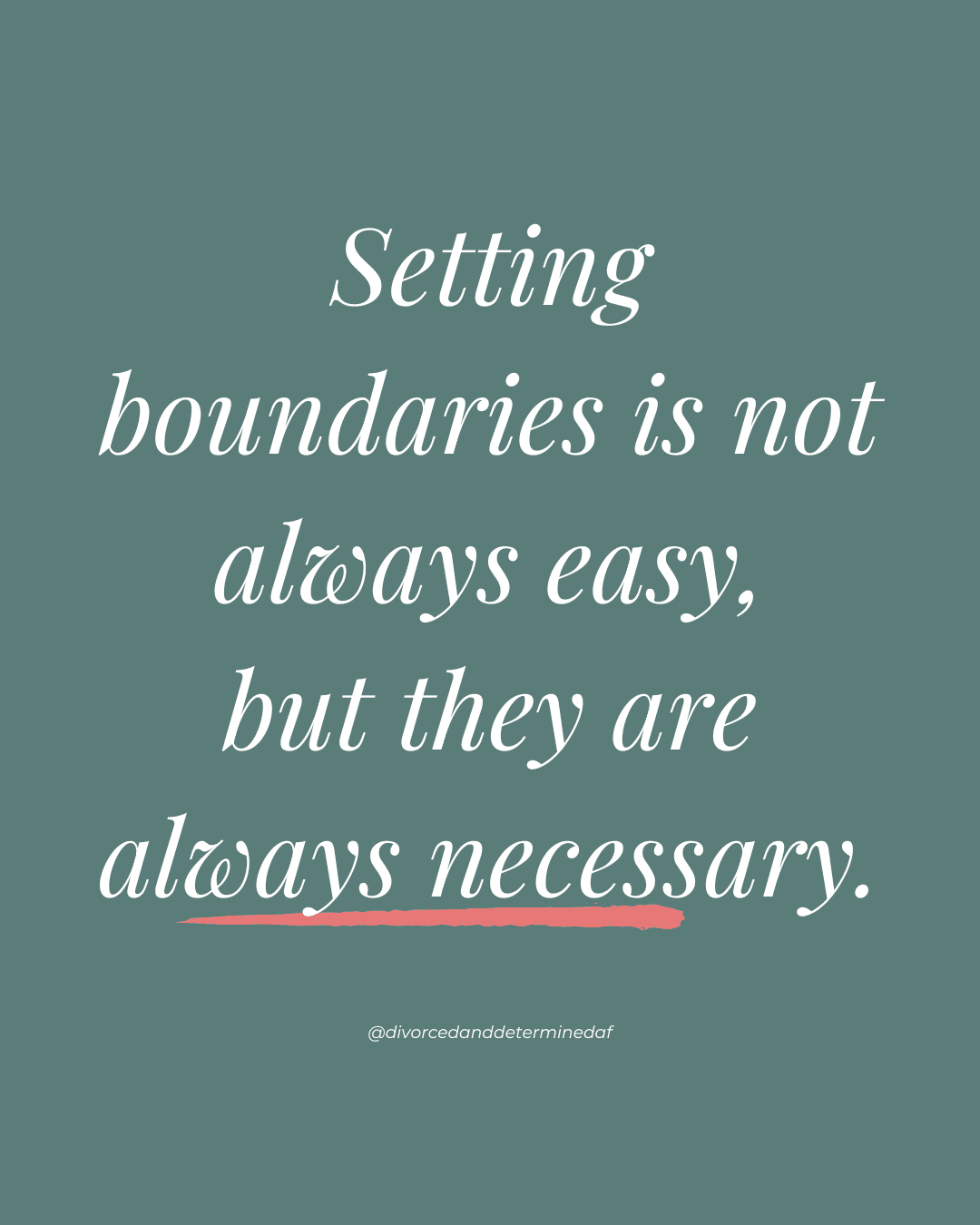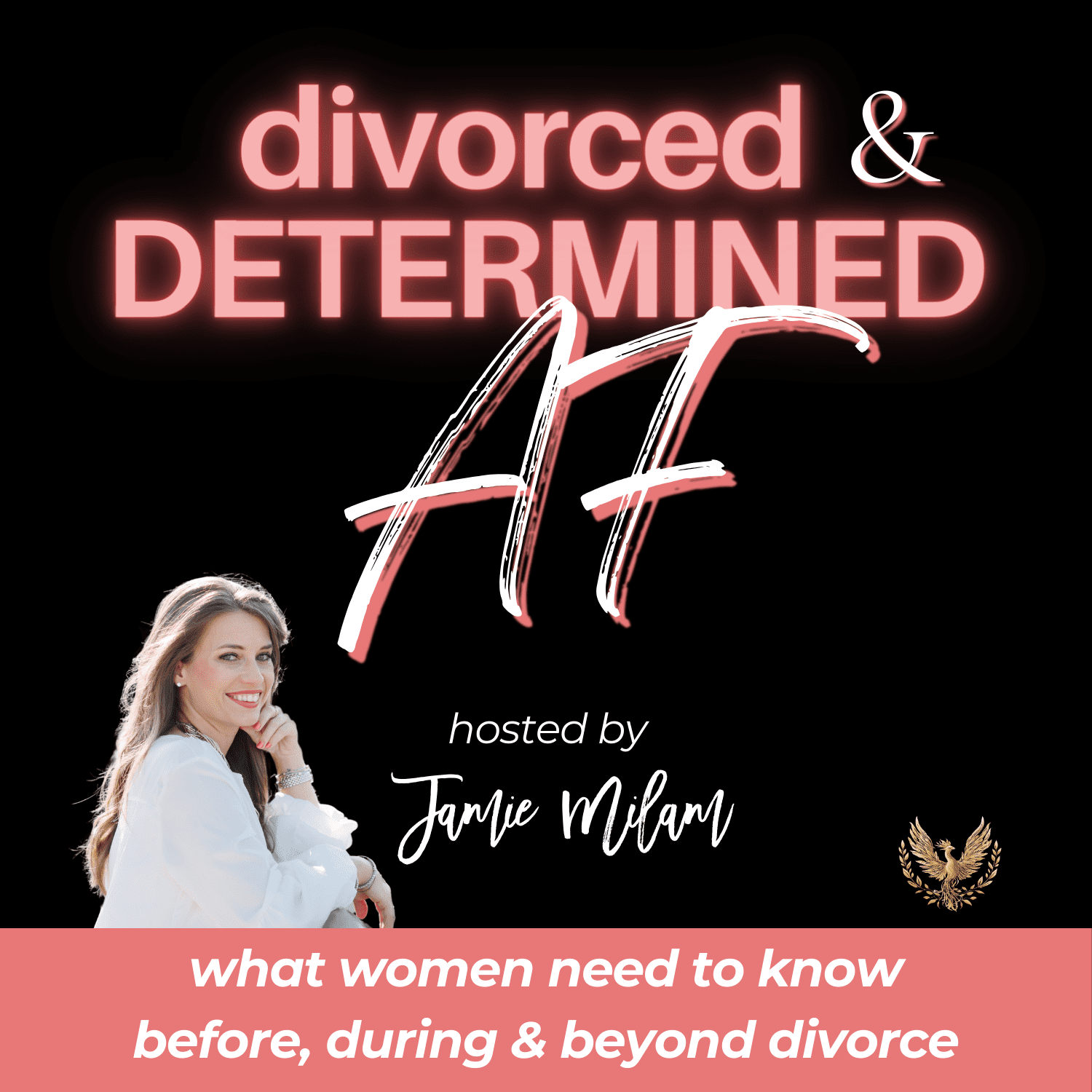THE BLOG
THE BLOG
*This website uses affiliate links which may earn a commission at no additional cost to you. As an Amazon addict and Associate, I earn from qualifying purchases, but I'm only recommending products I love!
Browse More Blog Posts:

Why Boundaries are Key to Aligned Living
[Plus 3 Practical Examples of Boundaries in Action]
From social media experts to pop culture references, there is a lot of talk about boundaries today—what they are, why they're useful, and how to implement them. This is part of the increasing awareness of mental health and well-being in our culture, plus the willingness to have these conversations in public.
And this is a good thing! Boundaries are essential to living an aligned life.
Yet, there's some confusion around them. There's perhaps even some skepticism about if they "work."
Here we'll break down what boundaries are and how they function, plus three practical examples of boundaries in action that support living an aligned life.
What Are Boundaries? Breaking It Down
Mary Brown, a boundaries coach and guest on episode 58 of The Divorced and Determined AF podcast, helps us break down the definition of boundaries. In that podcast episode, she shared the technical definition of boundaries as: "the limits and guidelines that you set for yourself that determine what you will or will not participate in."
So, boundaries are:
- Something you set for yourself—not what you expect from other people.
- Related to actions—things you will and will not do.
Mary's favorite way to look at boundaries, though, comes from Brené Brown, who very simply describes them as "what's okay and not okay." This brings it down to the question of what works for you and what doesn't. You can approach each situation with this outlook, digging deep into yourself and ask: is this okay with me? If not, you need to address your boundaries.
Many women struggle to implement boundaries in their lives because we're raised and taught to put other people's happiness in front of our own. We're often pulled from all kinds of directions—partners, children, work, friends—and see everyone's needs as more important than our own.

But you, just like everyone, have innate value and worth. You're entitled to build a life you love, find alignment and purpose, and do what makes you happy.
And this is where boundaries come in. Boundaries can:
- Help you identify your values and keep to them.
- Protect your time for what is most important to you.
- Show other people how to treat you and what you will and will not allow from them.
- Protect yourself from harmful or toxic relationships.
- Build inner trust and confidence.
- Prevent burnout and exhaustion from trying to do everything at once.
- Promote mental health and well-being.
Boundaries have the potential to transform your life. They're not so scary either—they're simply about "what's okay and what's not okay" in your life.
How Boundaries Work: A Simple Math Equation
Setting boundaries "works" by building your self-confidence and self-esteem. They have a transformative power in your life because they show yourself and others that you believe in your innate worth—that you are worth putting yourself first.
Let's break it down and see how things all fit together. Here's a simple math equation (also shared by Mary in the podcast):
Self-Esteem = Self-Worth + Self-Confidence
Self-Esteem is the ultimate driver of value-driven, aligned decisions. With self-esteem, you understand your values, worth, and needs, and communicate them via boundaries and decisions. Self-Worth is inherent and given to us at birth—no one earns their self-worth; we all have worth and value. You don't have to do anything here but understand your self-worth. Self-Confidence is built over time as we make and keep commitments ourselves. As you continue to keep commitments to yourself, you build trust. I trust myself to make the best decisions for me.

Boundaries in Action: 3 Practical Examples
You may need to set stronger boundaries in one or many areas of life. Common areas may be:
- Work: You're overworked, stressed out and never feeling caught up, always saying "yes." Boundaries can help you identify what's most valuable to you and how to protect your time to do those things.
- Friends: You love your friends, but they're always reaching out to vent or complain. You want to support them, but can't be available at the drop of a hat all the time. Boundaries can help you communicate that you value the relationship, but things need to change.
- Family: Your partner and children always have something they need from you—meals on the table, reviewing homework, cleaning up, and everything else. Boundaries can help you communicate your frustrations and find a solution to share household responsibilities so everyone wins.
This is just the tip of the iceberg and there could be many other areas to implement stronger boundaries in your life.
Let's look at three examples of common scenarios and how boundaries might look in action.
Boundaries example 1: A crazy work schedule
You're coming home from work each day absolutely fried. But, somehow, you still end up picking up your phone to check emails or make calls after dinner, worried you'll miss something important. You would rather be spending time with your kids, but find yourself drawn back into work every time a notification "ping" goes off.
To avoid total burnout and disconnection with your family, something's got to change. You need to protect your time by setting stronger boundaries around work. Start with this question: What's most important at work? What's most important at home? How can I organize my schedule to meet those things?
Then, develop some boundaries you can implement. They'll look different for each person, but here are a few examples:
- Work notifications are off once you're home.
- Set a voicemail or email "out of office" message that offers your work hours and when someone can expect to hear back from you.
- Hire a virtual assistant to help you get ahead with your administrative tasks.
- Have a conversation with your manager about what you can realistically do at work and what you can't take on.
- Try time blocking, the Pomodoro technique, or other productivity strategies so you're getting more done during your work hours.
- Create a morning and evening routine that promotes self-care, gratitude, and relaxation.
There are lots of things you can do to implement stronger boundaries around your work. Start by identifying your values and then get serious about how to protect your time to focus on them.

Boundaries example 2: A "needy" friend
Your good friend is going through a lot right now. She's in the middle of a breakup, there's stuff at work, and she's frustrated with her kids. It's a lot and you want to be there for her. But, she's calling you every day, sometimes while you're at work or getting ready for bed, and texting constantly. You've got your own stuff going on and find it draining to be with her.
To actually be a supportive friend, something's got to change. You need to have a conversation with her that sets some boundaries around your communication so you can show up when it really matters.
Ask yourself: What capacity do I have right now? How can I show up meaningfully in our friendship? Then it's about having a potentially tough conversation that sounds something like this:
- "I value our friendship so much and I want to be here for you during this tough season. In order for me to show up my best self for you, I want to set some expectations around my availability. If it's a phone call, it's best if we can chat between 5:00 to 5:30 on my way home from work. And for texts, please know I may not be able to reply right away, but I promise I won't ignore you and will be sure to get back to you before I head to bed."
The specifics of your boundaries might be different, but the point is to communicate them and them stick to them. If they call or text at another time in the day, don't answer. If you need to, reiterate your boundaries. And, finally, know that it's okay to change things up, too. If it's no longer working for you, you can absolutely change your boundaries to be either stricter or more lenient.
It may feel tough to do or feel like you're not being a supportive friend, but think about it this way—on an airplane, they always say "If the oxygen masks come down, put yours on first before helping someone else." You can't pour from an empty cup and you can't be available to someone all the time. Boundaries are putting on your own oxygen mask so you can show up for them in a better way.
Boundaries example 3: Communication breakdown with a partner
You've been noticing the communication breakdown between you and your partner for a while now. You may even be wondering if divorce is on the horizon. All of your conversations seem to spiral into yelling and name-calling and it's become harder and harder to have productive discussions.
For this relationship to continue, something's got to change. The simple place to start is with this question: What am I willing to do? What am I not willing to do? It helps writing things down like this:
- When conversations involve name-calling, you've noticed your heart rate elevate and you don't feel safe. You're not willing to have a conversation when that happens. Communicate your boundary: "I don't feel respected, valued or safe when I am called XYZ. I'm going to step away from this conversation now and we can come back to it when there won't be name-calling."
The key here is to tap into your body and notice what makes you feel good or bad in different communication scenarios. Then, communicate what you are and are not willing to do. If your spoken boundaries are continually violated, it's time to reconsider the future of that relationship and take the next steps toward counseling or even ending the relationship.
Setting boundaries is not always easy, but they are always necessary.
Boundaries let you follow through on commitments to yourself, which builds self-confidence. Self-confidence is a key ingredient to self-esteem, which allows you to make the best decisions for your life and happiness.
If you need help setting boundaries in your life, start with the Beautiful Boundaries Journal or check out my conversation with Mary Brown on episode 58 of The Divorced and Determined AF podcast.
To setting better boundaries,

Save this post to come back to or share with a friend!

About Me
I'm Jamie Milam, a determined AF woman who's embraced life after divorce by finding peace through self-awareness, intentional decision-making, and thrilling new travel adventures.
As a Realtor® in Charlotte, NC (and your connection to top agents nationwide), I’m passionate about guiding you through your homeownership and design goals—while also helping you create space for the things you love. My mission is to empower you to create a life of alignment too - at home, abroad, and within.
Whether it’s through real estate tips, home design inspiration, or solo travel experiences for divorced, independent women, I hope this space encourages you to discover deeper self-awareness and build a life that aligns with your passions and needs.
Have you scoped the podcast series that empowers women to make aligned decisions in a divorce?

Your Free Charlotte City Guide

Jamie Milam is a Realtor® in the Charlotte, NC area, licensed in both NC & SC, and has the ability to refer you to a number of agent partners across the nation, regardless of where you may live. She is an enthusiast for the power of awareness and believes it can be used in all facets of life to support aligned living.
**Disclosure** This post may contain affiliate links and they are at no additional cost to you, though I may earn a small commission. Don't worry, I only recommend products or services that I have tried or believe would be of great value to you! All opinions expressed are those of my own!
Recent Posts
There's More ▾
There's More ▾
Let me share the goods!
Come from contribution, that's a motto I've valued for years! So... that's exactly what I am to provide you, straight into your inbox each week! No fluff and all open-book. Inspiring you to practice awareness, value your authentic self, and implement strategic actions so you can create alignment in your world to live the life you desire and deserve!









